Bridgeman Images proudly represents the work of Hungarian artist Tamás Galambos (b. 1939). His practice incorporates themes of Pop Art and Folkloresque art, engaging his audience through a hidden narrative.
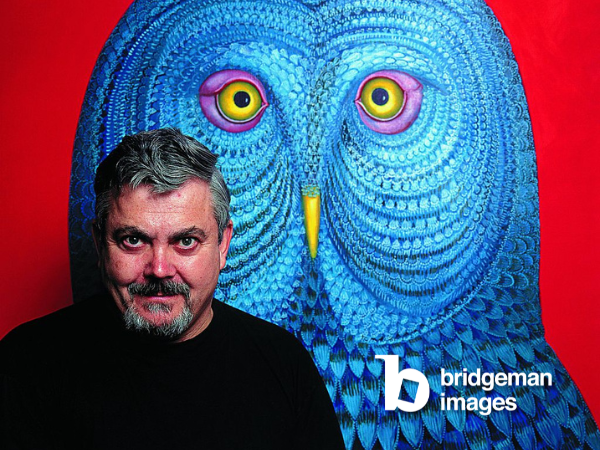
Born in 1939 in Budapest, Galambos went on to study at the Academy Of Fine Arts in Budapest, before discovering his own artistic style. One of his most notable artworks, Summer, was used within the book cover of the Penguin Classics edition of One Hundred Years of Solitude by Gabriel García Márquez.
Click here to explore more artworks by Tamás Galambos
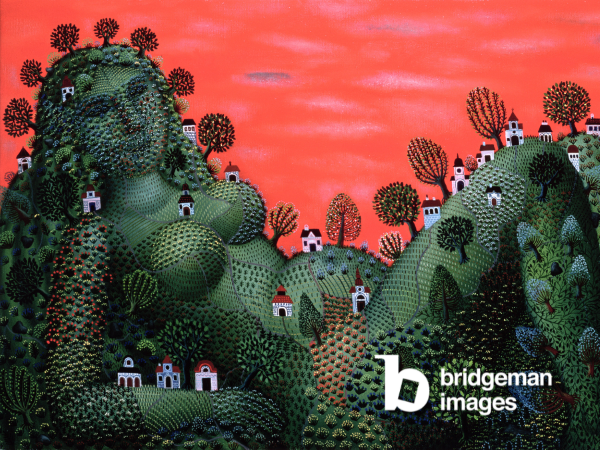
As Galambos gained popularity, it was argued that his style did not fit into one specific art movement or style. Yet, his combination of artistic movements, notably Gothic art, Folkloresque, Pop Art and Surrealism, encouraged his own individual style, characterizing his culture and personal expression.
Tamás Galambos responded to a question suggesting his work was 'naive' in an interview in 1968: "I'm not a naive painter, my meaning is not naive. Whatever is naive-related in my painting is a deliberate choice of formal expression."
Gothic Art
In Galambos’ youth, he began to experiment with different art styles and techniques. He expressed his Gothic art style through painting wooden Christian icons which would later be transported and sold at Christmas fairs. This period of Galambos’ life proved highly influential in his artistic style, where his artwork began to reflect more realistic human figures within more complex settings, interpreted differently according to each individual person’s perception.
%20final%20.png)
Folklore
In addition to Gothic art, Tamás later explored more Folkloresque elements. Folkloresque art is said to challenge conventional boundaries, offering a new approach to contemporary themes such as film, literature and media. Galambos was said to be most influenced by the Hungarian Folkloreque painter Istvan Pekary and the Hungarian virtuoso miniaturist Arnold Gross. Both artists’ images defied traditional realms of art through mixed media techniques that were less well-established. The combination of Gothic art and Folkloresque art can be seen within one of Galambos’ pieces entitled The Legend of the White Deer. This image underlines the element of mystery and the unknown, demonstrating Galambos’ purposeful and engaging technique.
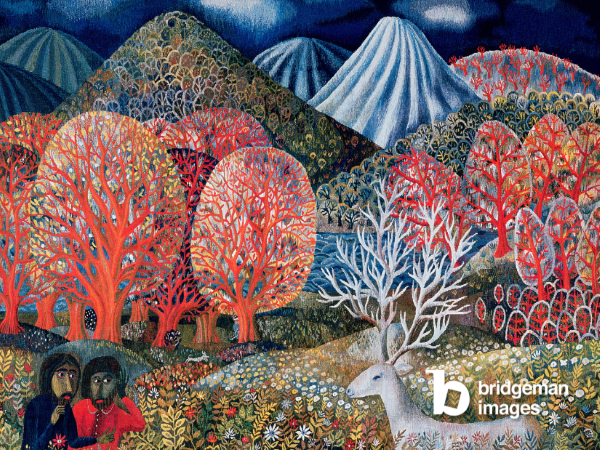
Pop Art
However, the element of Pop Art is arguably the most obvious feature within his work, depicting more politically motivated messages. The artistic movement Pop Art gained popularity as a result of the political climate during the 60s, encouraging revolutionary themes against traditional artwork. This reflects the attitude of Tamás Galambos as well, where certain aspects of his art embodied the atmosphere of Eastern Europe. Having lived through the era of the ‘Iron Curtain’, Galambos is no stranger to a high political climate. Yet in spite of the challenges to political freedom during this time, this artist still found a way to defy expectations through his art.
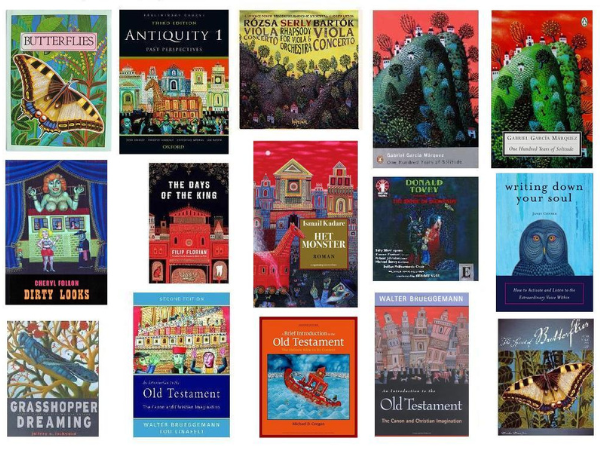
The embedded political messages within Galambos’ art simultaneously reflect the Neo-Primitivism movement. This movement proposed a new type of art that challenged Western ideals through more striking portrayals of the current political climate. Whilst many of the messages within Galambos’ work are hidden, his pieces hold similar themes relating to the absence of political freedom within a controlled state. This is particularly evident in The Fall of Jericho, as seen below. This piece clearly demonstrates the anti-Soviet commentary through the red sky and intimidating characters drawn, touching on the otherwise unspeakable. Within The Fall of Jericho, Galambos’ colour symbolism is most obvious. Similar to themes within medieval symbolism, different colors within an artistic piece are used to represent a different tone. For example, the use of the red sky is understood as symbolising themes of war and conflict, mirroring the atmosphere surrounding this artist during his childhood and much of his adulthood.

At the end of the era of the Iron Curtain, post 1989, Galambos continued to create highly influential artworks, marking a change in the way art is used as a form of expression. The Dance of Death at the Millennium’s End and the History, 1997 underline this artist’s reflection of his surrounding society. The Trojan Horse is said to be a gift from the West embodying freedom, democracy and a difference in society. However, the red sky implies that the overall atmosphere remains the same, thus nothing has changed. As Galambos continued to produce exciting artwork, he continued to return to his favorite themes, exploring his family history within Hungary.
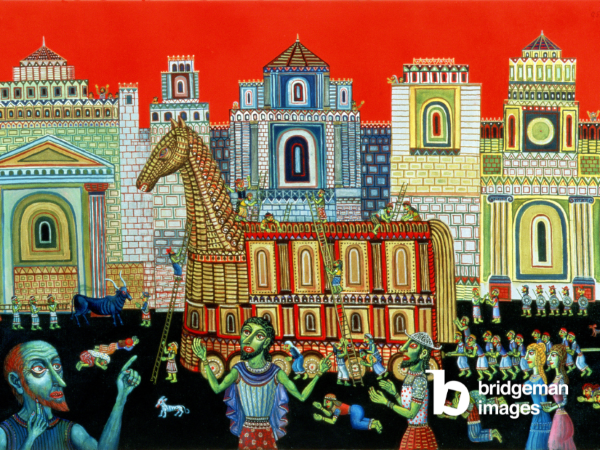
Tamás Galambos challenged traditional realms of art through his own individualistic style. Through the daring approach to his surrounding political landscape, his works have acted as a voice and platform for other artists to do the same.
Special thanks to Redey with whom we have partnered to bring Tamas Galambos' work to a global audience and for his contribution to this article.
Click here to explore more artworks by Tamás Galambos



